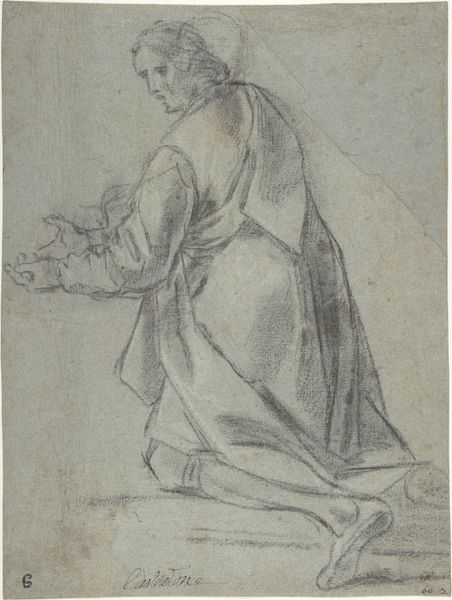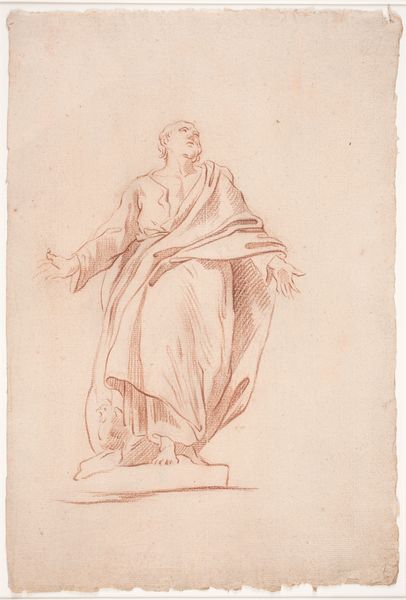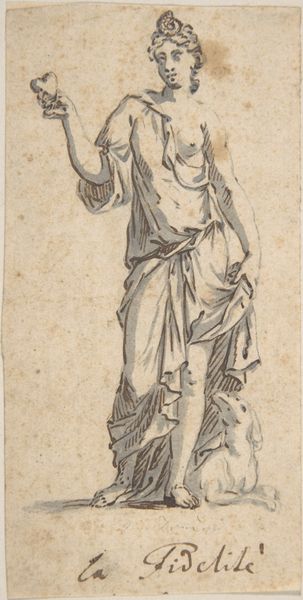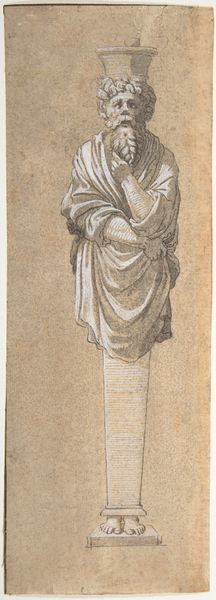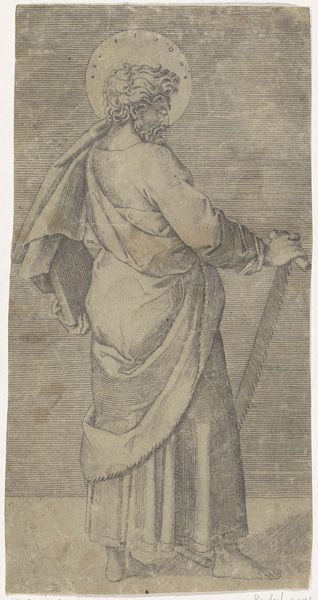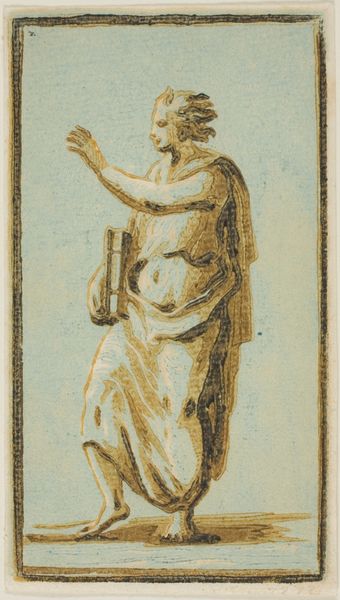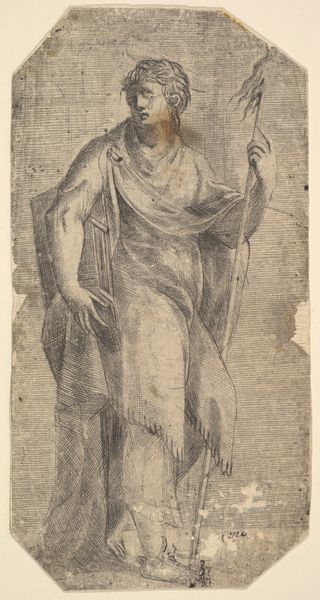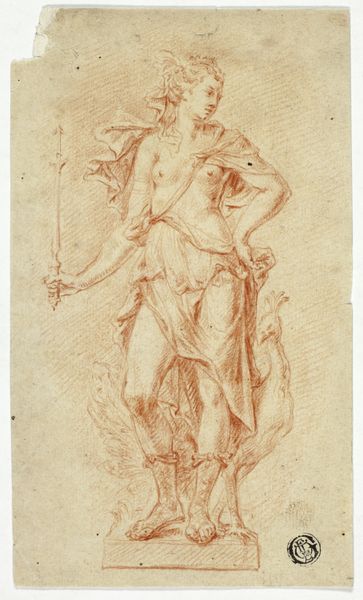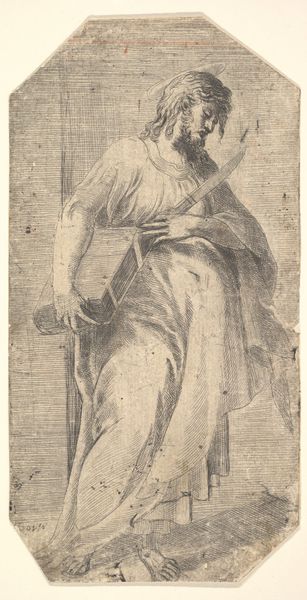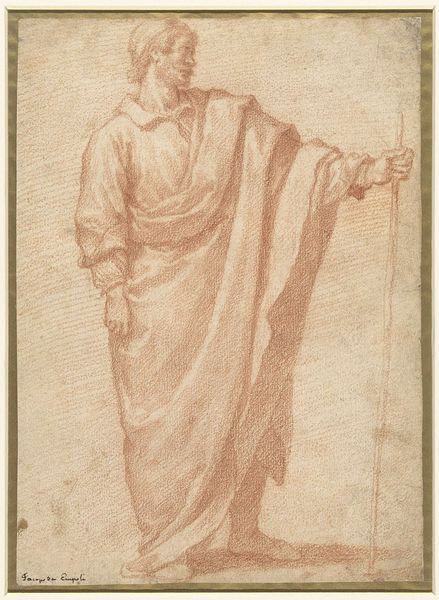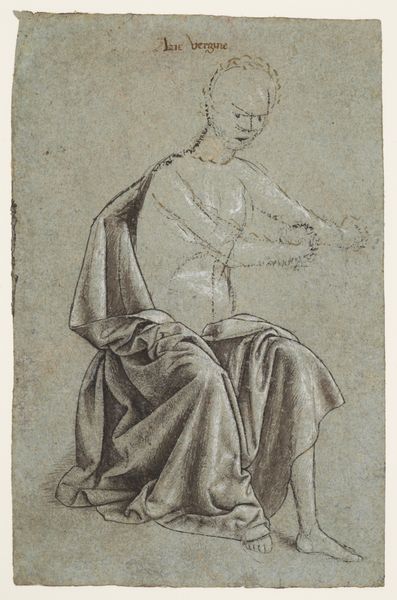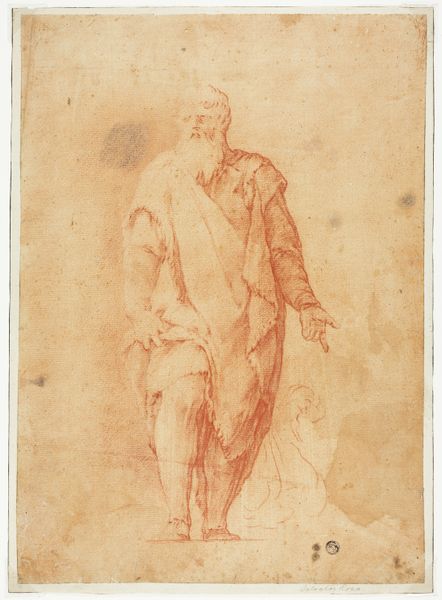
drawing, paper, ink
#
portrait
#
pencil drawn
#
drawing
#
mannerism
#
paper
#
ink
#
pencil drawing
#
portrait drawing
#
history-painting
Dimensions: sheet: 26 × 22.3 cm (10 1/4 × 8 3/4 in.) mount: 38.4 × 30.6 cm (15 1/8 × 12 1/16 in.)
Copyright: National Gallery of Art: CC0 1.0
Editor: This is Agostino Ciampelli’s drawing, “King David (Design for a Lunette),” ink on paper. It has a very classical, almost academic feel. What jumps out to me is the emphasis on line, but I'm wondering, what can we really learn from this sketch? Curator: Considering Ciampelli's material conditions, he’s clearly working within the demands of patronage. The ‘high art’ is the planned fresco, but look at the labor here. The drawing itself is a form of production, an exploration. What kind of paper is it? Was it readily available? Think of the economics behind even this preliminary sketch, the skill required for the subtle gradations achieved with ink. Editor: So you're saying, don't just see it as a study for something bigger. The drawing itself embodies labor and has its own intrinsic value, as it explores material possibilities. Curator: Precisely! We have to consider who had access to these materials. Was this a collaborative process, involving assistants preparing the paper and ink? It reveals hierarchies of skill and artistic production within Ciampelli's workshop. How much would the patrons have considered about the process to create the piece compared to the prestige that it provided them. Editor: That’s fascinating. I usually focus on the final masterpiece, the fresco itself. Curator: But the masterpiece is only possible through this labor. This sketch displays planning and experimentation with form and technique. How does understanding that inform your view of the “finished” work? Editor: It makes me appreciate the complexity involved. Seeing the sketch reveals so much more than the final result could suggest on its own. Thank you. Curator: Exactly! And remember, analyzing material conditions helps us understand art as more than just aesthetic expression, it’s also about power and access.
Comments
No comments
Be the first to comment and join the conversation on the ultimate creative platform.
